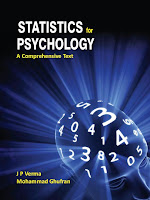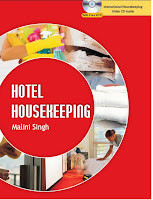About
the book
Many shopping malls that were developed during initial stages are facing
the heat due to a clear mismatch between their offerings and shopper’s
expectations. But would shopping malls be in a position to accommodate those
changes? And even before that, would people developing and managing shopping
malls be in a position to anticipate changes that are likely to come in future?
What are the different controllable factors that can be used to mix-and match
to come up with the ideal mall-mix? A search for these
elements induced the authors to write this book.
Like any other business, mall management needs a holistic approach. That
is why the book is split into a number of chapters with each chapter
representing a core function involved in the practice of mall management. The
authors have ensured that the book highlights key aspects of these functions so
that a mall manager is in a better position to understand, appreciate and
supervise work in these domains. Apart from the mall managers this book would
be a suitable reading for practitioners and students of Retail Management. For
researchers the book highlights a holistic view of mall business and would help
them in picking up threads for initiating and conducting research on issues
that raise curiosity in their minds.
About
the authors
Dr.
Harvinder Singh is
an Associate Professor in the area of Marketing with Institute of
Management Technology (IMT), Ghaziabad.
He has completed his doctorate from BIT, Mesra, Ranchi, on Management of Shopping Malls. He
has done his MBA from Guru Nanak Dev University, Amritsar. He has over 14 years of teaching experience
and had been part of faculty in institutions like BIMTECH, BIT
Mesra, Amity
Business School
and APEEJAY Institute of Management. Dr. Singh was awarded ‘Dewang Mehta award
for best teacher in Retail Management’ in the year 2008.
Dr.
Srini R. Srinivasan is
a professor of Marketing and heading the Research Program at Vivekanand
Education Societies’ Institute
of Management Studies
and Research, Mumbai. He holds masters degree in Management Studies and
has received his Ph.D in the area of Retail Management from Mumbai University.
A passionate teacher, Dr. Srini has over 11 years of teaching experience
in Management Institutes such as NITIE, SYMBIOSIS,
KJSOMAIYA, SIESCOMS and VESIMSR where he has worked as full time
faculty. He has received the Best Educationist Award in 2011 from
Indian Solidarity Council & IIEM and is also a recipient of NIC Young
Achievers Award. Dr. Srini has been involved in work related to strategic
consulting for Lawrence & Mayo, Loot and Dosa Plaza etc.
Table
of contents
1.
Introduction to Retailing and Shopping Malls
2.
Concept of Shopping Mall
3.
Mall Development Process
4.
Financing and Revenue Model for Shopping Malls
5.
Tenant Mix
6.
Leasing Administration
7.
Marketing and Promotion Activities for Shopping Malls
8.
Facilities Management in Mall Operations
9.
Regulatory Framework for Shopping Malls
10.
Handling Anchor Tenants
11.
Future of Shopping Malls
Glossary
Index
Recommendations
The
last decade has seen a flurry of new malls in India. More than 260 malls have
been set up in 5 years in the country. This has resulted into all kinds of new
shopping habits for customers in the country and they have been looking to
malls as the destination for not only shopping but also as the place for social
gathering and entertainment. Not all malls that have been set up are successful
and there are various reasons for this. This book demystifies the various
aspects of malls and mall management and could go a long way for retail
students, mall owners, mall consumers, mall tenants and even those involved in
urban planning.
Kumar
Rajagopalan
CEO,
Retailers Association of India,
Mumbai
Mall
Management- Operating in Indian Retail Space is an admirable attempt to pen down various functional
aspects responsible for success and failure of a modern shopping centre. I am
sure that this book will help enhancing professionalism in the retail real
estate sector by serving as an excellent guiding tool for the students as well
as professionals.
Guruduth
Prabhu
Vice
President, Shopping Centres Association of India, Mumbai
I
find this new book Mall Management: Operating in Indian Retail Space to
be very practical, grounded and realistic. The authors have been successful in
capturing the market realities and lucidly explaining the entire working of the
retail real estate industry. I am sure the audience interested in retail and
retail real estate will immensely benefit from this book.
Shubhranshu
Pani
Managing
Director Retail, Jones Lang LaSalle
Today
when the concept of organized retailing is speeding up and numerous malls and
shopping centres are mushrooming across the country, I believe that this book
proves to be a guide to developers, mall managers and students. I find this
book to be wide ranging, covering important areas like conceptualizing a mall,
the legal and regulatory complexities involved, finance and general
administration and facility management. I congratulate the authors for a very
timely release of this book.
Siddharth
Sahgal
Head-
Mall Management Portfolio, Pioneer Property Zone, Mumbai
 Teaching of English grammar to a mixed group of
students where the primary aim is to make the class interesting and learner-centric is always a challenge to the teachers. To meet this challenge, it is
essential to equip the classroom with new and innovative methods and materials
for learning. This new text-cum-workbook on English grammar is an attempt
towards this direction. Based on real classroom experience of the authors, the
book has got clear organization and user-friendly accessible language. Ample
numbers of provided exercises aim to enable the students to regress and polish
their grammar consistently while they enjoy learning through activity based
work. Both students and teachers will appreciate the self-teaching quality that
incremental exercises provide throughout the chapters with keys at the end of
the book.
Teaching of English grammar to a mixed group of
students where the primary aim is to make the class interesting and learner-centric is always a challenge to the teachers. To meet this challenge, it is
essential to equip the classroom with new and innovative methods and materials
for learning. This new text-cum-workbook on English grammar is an attempt
towards this direction. Based on real classroom experience of the authors, the
book has got clear organization and user-friendly accessible language. Ample
numbers of provided exercises aim to enable the students to regress and polish
their grammar consistently while they enjoy learning through activity based
work. Both students and teachers will appreciate the self-teaching quality that
incremental exercises provide throughout the chapters with keys at the end of
the book.













